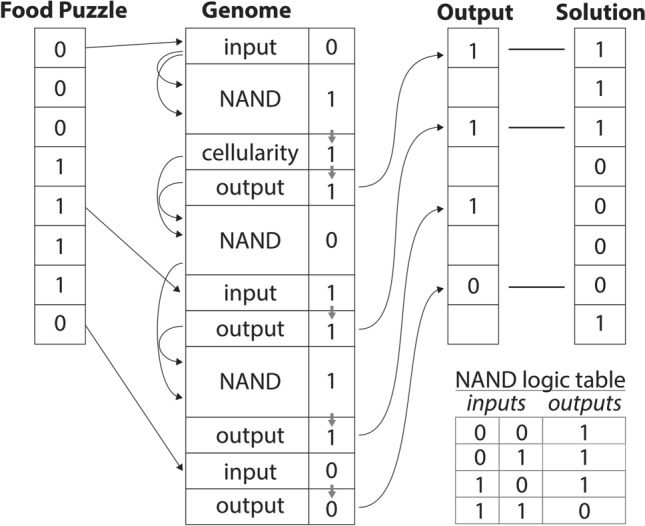Fig. 1.

Schematic of a simulated genome and its metabolic processing within the artificial life simulation system. The genome is composed of four types of genes. Cellularity genes define the cellular impermeability value of the organism in relationship to a certain function, typically 1–0.5n, where n = the number of cellularity genes in the genome. Three different metabolic genes allow the organism to process food puzzles in order to acquire processing energy. The food puzzles are strings of eight binary digits. The three types of metabolic genes are input, output, and NAND. A read head processes each metabolic gene in the genome in order and associates a binary digit with each gene as it is processed. Input genes copy one of the food puzzle digits according to an index number associated with each specific input gene. NAND genes contain pointers that take two binary digits associated with any previous genes as input and compute a new binary digit by performing a NAND operation on them. Output genes copy the previous binary digit to an output register according to an index number associated with each output gene. The solution to the food puzzle is a string of the opposite binary digits. Processing energy rewards are allocated based on the number of correct matches between the organism’s output register and the food puzzle solution
